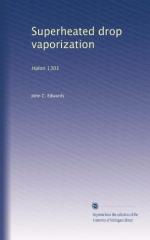|
This section contains 714 words (approx. 3 pages at 300 words per page) |

|
A chlorofluorocarbon (CFC) is an organic compound typically consisting of chlorine, fluorine, carbon, and hydrogen. Freon, a trade name, is often used to refer to CFCs, which were invented in the 1930s and have been used widely as aerosol propellants, refrigerants, and solvents. Odorless, colorless, nontoxic, and nonflammable, CFCs are considered valuable industrial products and have proven an especially safe and reliable aid in food preservation. However, the accumulation of CFCs in the stratosphere that may be linked to ozone depletion has generated considerable public debate and has led to legislation and international agreements (such as the Montreal Protocol and its amendments, signed by 148 countries) that banned the production of most CFCs by the year 2000. One of the substitutes developed by industry, the hydrochlorofluorocarbons (HCFCs), still contain enough chlorine to interfere with atmospheric ozone chemistry, although in much lesser amounts than CFCs. The Copenhagen amendment to...
|
This section contains 714 words (approx. 3 pages at 300 words per page) |

|


